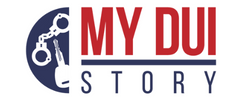The day finally arrived.
It was an October morning, nearly one year after the accident which led to my arrest for driving under the influence in Florida.
This marked the first time I was ever in a courthouse appearing before a judge who was about to impose a life-altering sentence on me. To say I was nervous would be an understatement. I didn’t get any sleep the night before, even though I knew what the penalties were going to be beforehand.
My attorney let me know that there would be no jail time, but the sentence would be boilerplate for first-time DUI offenders in the state.
I arrived at the courthouse and sat outside the courtroom waiting for my attorney and I to be called into the judge’s chambers.
Prior to going in, I was advised by my attorney to not say anything other than “yes” or “no” and defer any questions to him. I was called, sworn in, and was read off the charges against me to which I plead “no contest” as directed by my attorney.
In a driving under the influence case, there is no difference in terms of your criminal record, your driving record, or the penalties imposed. Either a plea of guilty or no contest will both result in a criminal history.
The judge handed down my sentence which was shockingly similar to what was offered for Pre-Trial Diversion as you can see in the chart below:
Pre-Trial Diversion Plea Offer:
|
My Court Mandated Sentence:
|
After my sentencing, I was fingerprinted, handed a copy of the court’s paperwork, and was told I had to report to probation within 24 hours.
At this point, my driver’s license was immediately suspended again for six months. Back in February, when I was originally arrested and charged with driving under the influence, my license was automatically suspended by the Florida Department of Motor Vehicles as an automatic administrative suspension.
This second suspension was a six-month court-ordered suspension as required by law. So, yes, if you add everything up, my license was suspended for a full 12 months.
Upon the suspension, I once again had to apply for a hardship license, or Business Purposes Only license once again. Although this time, it took much longer to obtain that license than I did the first time.
After filing the paperwork, it took about two-and-a-half weeks before I was scheduled for a telephone hearing and once again granted the BPO license. During those two weeks, I had to rely upon Uber, Lyft, and work associates to take me to and from work and other appointments such as probation meetings.
One of the sentences involved having my vehicle immobilized for ten days. I arranged for this to be done while I was awaiting my hardship license, which proved to be perfect timing.
While all this was going on, I had to report to probation. There were two separate appointments I had to make:
Intake – this is where I reported to the probation office at the county jail where I filled out what they called “intake paperwork” and chose the organization I would complete my 50 hours of community service.
Introduction – this is where I met with my probation officer for the first time. All terms of probation were outlined and we went over all the terms of the sentencing and listed what was done, in progress, and yet to be completed. We went down the list and as of that first meeting, the status on each was:
- 12 months of supervised probation – Starting that date
- Victim Impact Class – Completed online through MADD and provided proof of completion
- 50 hours of community service – Starting the following week
- Level 1 DUI Class – Completed in February as part of the condition of receiving by first BPO license
- 10-day impound – Was in progress
- $1000.00 fine
- $516 court cost
- 6 months driver’s license suspension – Was in progress
As part of probation, I was required to check in monthly. For me, it was done via a telephone reporting service once a month on a specific day. For a fee, of course.
At sentencing, the state attorney did not object to me applying for early release from probation, which could happen at the six-month mark as long as all items on the checklist were completed satisfactorily. This request is made through the probation officer or through my attorney who then goes to the judge to have it approved or denied.
I am coming up on my six months and will update this if my early release was approved or not.
Now, before I end this section, let’s talk for a moment about community service. My sentencing required me to complete 50 hours of community service. I asked during my court appearance if I was able to “buy out” some or all of those community service hours and was told, “no” even though, in some cases, the option exists to buy out some hours at the rate of $25 an hour.
For community service, I was given a choice of various places near my residence where I could complete those hours. There were about six to choose from – five of them were for “janitorial general cleanup, including cleaning toilets,” and one for “folding and sorting clothes at a donation site.”
Without hesitation, I chose the clothing donation organization.
In January 2022, I completed all items that were required as part of my sentencing and just had to finish out the driver’s license suspension and supervised probation.
